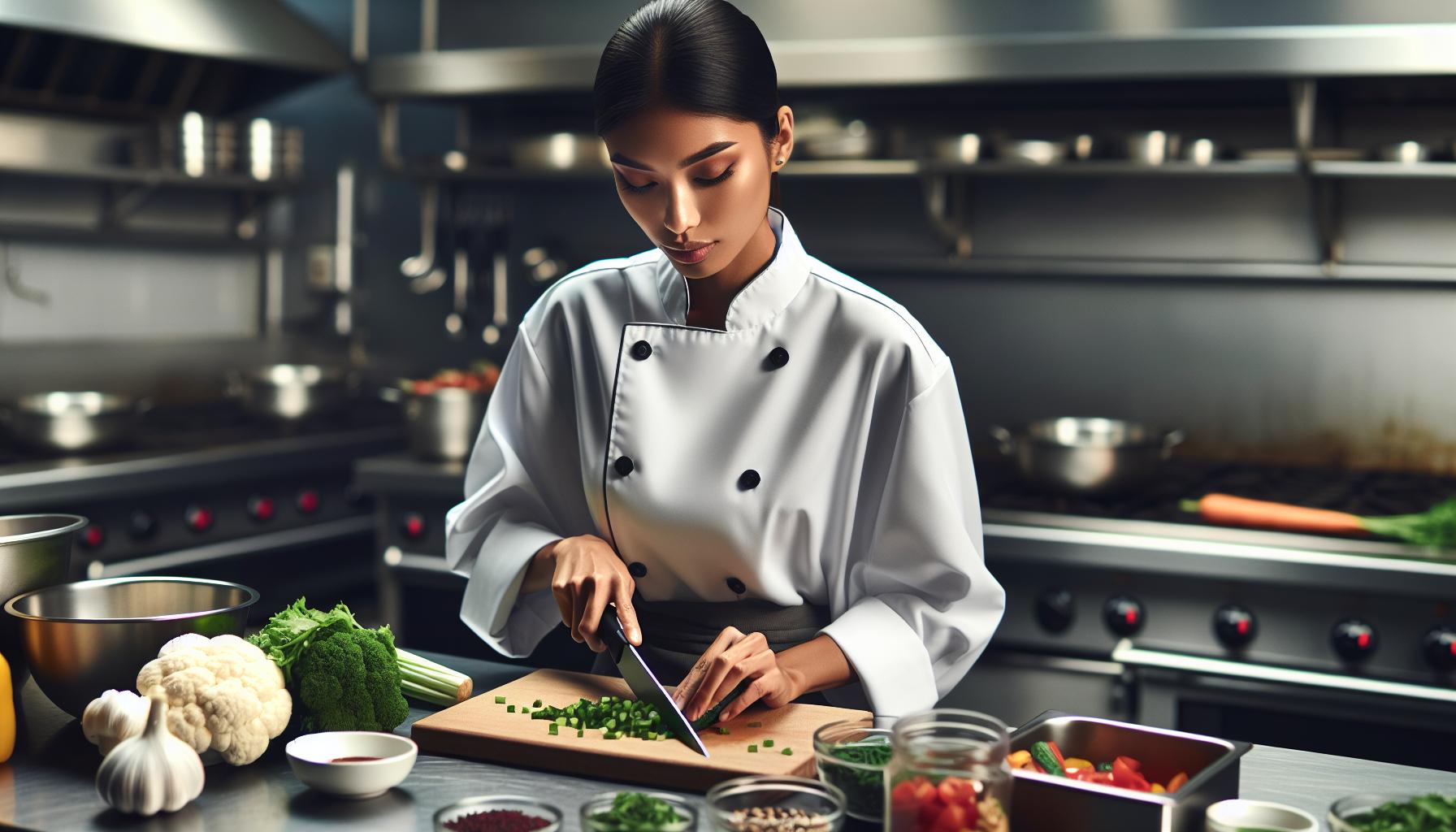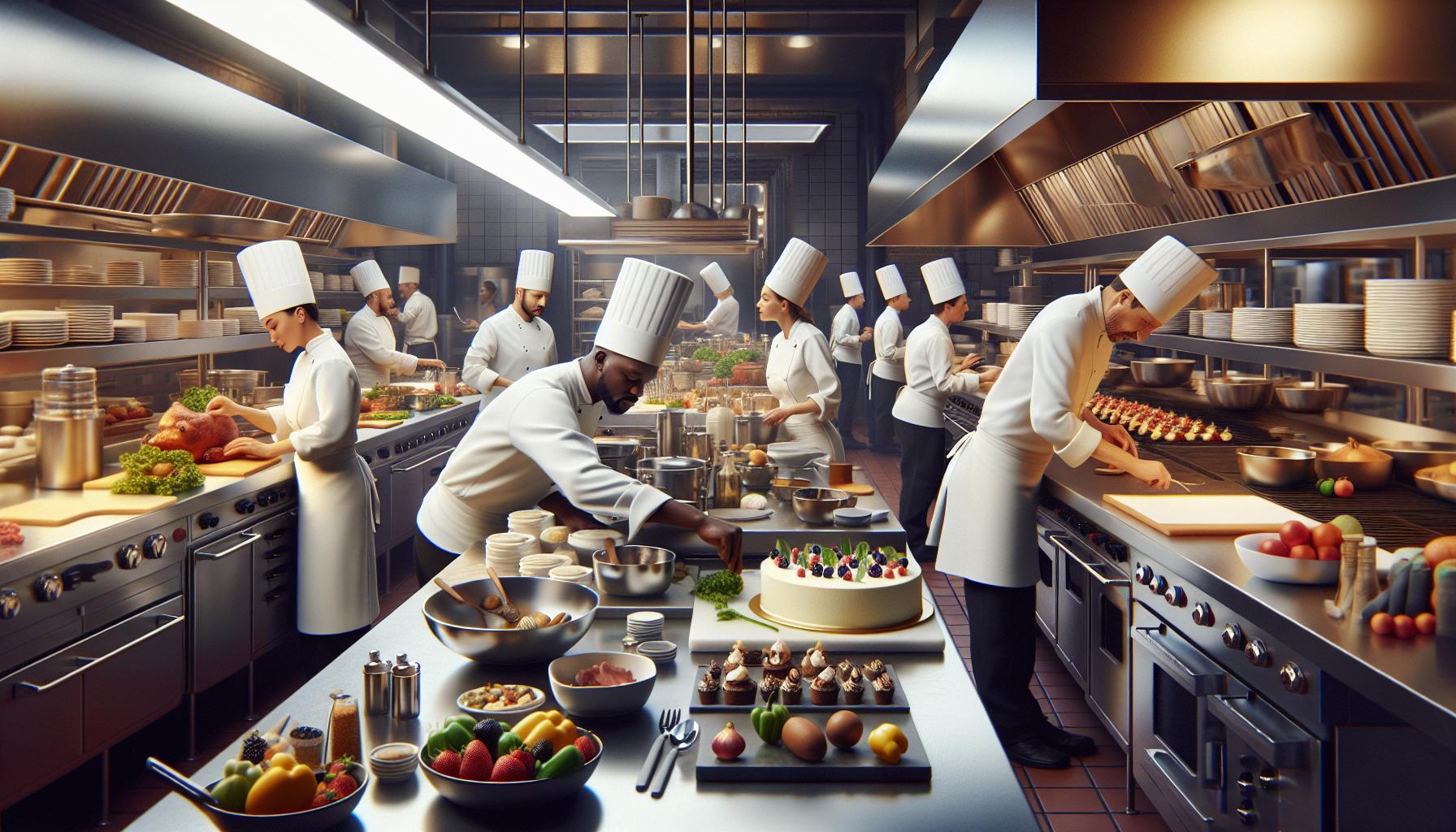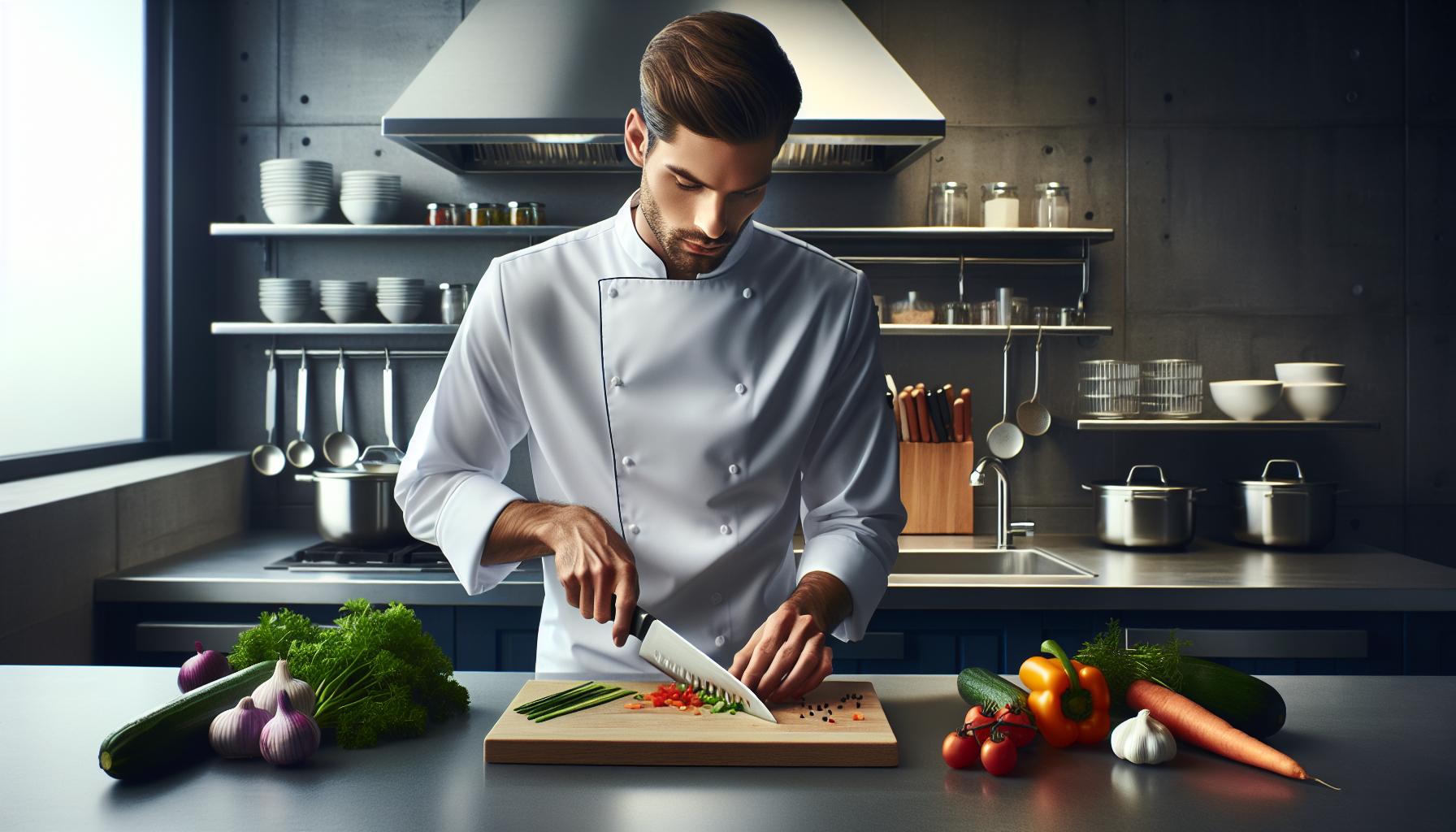Ever wondered why chefs call themselves artists? It’s not just because they can make a mean grilled cheese sandwich. Culinary arts represents the delicate balance between creativity and precision in food preparation turning simple ingredients into edible masterpieces that delight both the eyes and taste buds.
From the sizzling sounds of a bustling kitchen to the perfectly plated dishes that emerge from behind those swinging doors culinary arts encompasses far more than just cooking. It’s a sophisticated blend of science art and cultural heritage that transforms raw ingredients into extraordinary dining experiences. Today’s culinary professionals aren’t just cooks – they’re flavor architects storytellers and innovation pioneers rolled into one flour-dusted package.
What Does Culinary Arts Mean
Culinary arts integrates cooking techniques with creative expression to produce exceptional dining experiences. This artistic field encompasses the knowledge of food preparation methods traditions across cultures.
Definition and Core Concepts
Culinary arts represents the mastery of food preparation through scientific principles artistic expression. The field incorporates five essential elements: knife skills preparation methods flavor profiles food safety standards presentation techniques. Professional chefs demonstrate expertise in:
- Temperature control for cooking various proteins vegetables
- Ingredient pairing based on chemical compositions textures
- Timing coordination of multiple dishes simultaneously
- Equipment utilization from basic tools to specialized machinery
- Plating design that enhances visual appeal portion control
History and Evolution
The culinary arts originated in ancient civilizations where cooking methods developed alongside cultural traditions. Royal courts in France established the first professional cooking standards during the 17th century. Key milestones include:
| Period | Development |
|---|---|
| 1800s | First culinary schools opened in Europe |
| 1946 | Introduction of formal chef certification |
| 1970s | Rise of celebrity chefs television cooking |
| 2000s | Molecular gastronomy emergence |
Professional kitchens evolved from simple cooking spaces into sophisticated operations with specialized stations equipment. Modern culinary arts incorporates technology sustainability practices global influences while maintaining classical techniques foundations.
Key Components of Culinary Arts

Culinary arts encompasses three fundamental pillars that form the foundation of professional cooking. Each component requires specific skills mastery proven techniques professional growth.
Food Preparation Techniques
Professional chefs master 12 core cooking methods including braising roasting sautéing poaching steaming grilling. Temperature control plays a crucial role in achieving optimal results: meat proteins coagulate at 165°F vegetables retain nutrients at 212°F sauces thicken at 350°F. Advanced knife skills incorporate 8 essential cuts: julienne brunoise chiffonade dice slice chop mince supreme. Proper ingredient handling involves mise en place organization flavor development seasoning balance timing coordination.
Kitchen Management Skills
Kitchen management integrates inventory control staff supervision equipment maintenance safety protocols. Chefs track 15-20 active orders simultaneously while managing 5-8 kitchen stations during peak service hours. Effective inventory systems maintain 85% usage rates minimize food waste maximize profit margins. Professional kitchens operate with precise schedules: prep lists begin 4 hours before service line setup occurs 2 hours prior cleanup procedures last 90 minutes post-service.
Menu Planning and Design
Menu creation balances 5 key factors: ingredient seasonality cost analysis dietary restrictions culinary trends portion control. Successful menus incorporate 30% protein options 40% plant-based dishes 30% combination plates. Pricing strategies maintain food costs at 28-32% while ensuring 65% profit margins on signature dishes. Seasonal menu rotations occur 4 times annually featuring 12-15 main courses 6-8 appetizers 4-6 dessert selections.
| Menu Component | Percentage | Items per Category |
|---|---|---|
| Protein Options | 30% | 8-10 dishes |
| Plant-Based | 40% | 10-12 dishes |
| Combination | 30% | 6-8 dishes |
Career Paths in Culinary Arts

The culinary arts field offers diverse career opportunities across multiple sectors. Professional advancement in this industry combines technical expertise with creative expression.
Restaurant Positions
Line cooks specialize in specific cooking stations such as grill, sauté or pastry. Sous chefs oversee daily kitchen operations while coordinating with the executive chef on menu planning. Executive chefs manage overall kitchen operations including staff supervision, menu creation, cost control, and quality standards. Pastry chefs focus on bread, desserts, and confections, requiring specialized knowledge of baking science and artistic presentation. Kitchen managers handle inventory, scheduling, and compliance with health regulations. Prep cooks perform essential tasks like ingredient preparation, mise en place organization, and basic cooking duties.
Food Industry Opportunities
Food stylists create visually appealing dishes for photography, television, and advertising. Research chefs develop new recipes and products for food manufacturers or restaurant chains. Corporate chefs oversee multiple restaurant locations, establishing quality standards and training programs. Food critics evaluate restaurants, writing reviews for publications or digital platforms. Culinary educators teach at cooking schools, vocational programs, or community centers. Private chefs work directly for individuals or families, planning personalized menus and accommodating dietary preferences. Catering directors manage large-scale food service operations for events, corporations, or institutions.
| Position | Average Annual Salary (USD) |
|---|---|
| Executive Chef | 74,000 |
| Sous Chef | 48,000 |
| Line Cook | 32,000 |
| Pastry Chef | 45,000 |
| Food Stylist | 52,000 |
| Research Chef | 65,000 |
Essential Culinary Skills

Essential culinary skills form the backbone of professional cooking expertise. These fundamental abilities transform basic ingredients into exceptional dishes while maintaining safety standards.
Knife Techniques
Professional chefs master fifteen essential knife cuts including julienne, brunoise, chiffonade, batonnet, and dice. Proper knife grip positions the thumb and forefinger on opposite sides of the blade while the remaining fingers wrap around the handle. Sharp knives create precise cuts through vegetables, proteins, and herbs with minimal pressure and maximum control. The cutting board remains stabilized with a damp cloth underneath to prevent slipping during rapid chopping motions. Chefs maintain consistent sizing across ingredients to ensure even cooking times and visual appeal.
Flavor Development
Flavor development relies on understanding five taste profiles: sweet, sour, salty, bitter, and umami. Chefs layer complementary ingredients to create depth through techniques like caramelization, deglazing, and reduction. Temperature manipulation affects flavor intensity, with heat amplifying certain tastes while mellowing others. Seasoning occurs in stages throughout cooking to build complex profiles gradually. Herbs introduce aromatic compounds that enhance dishes through proper timing of fresh versus dried applications.
Food Safety Knowledge
Food safety protocols protect consumers through four key principles: clean, separate, cook, and chill. Storage temperatures range from 32-40°F for refrigeration and 0°F or below for freezing. Cross-contamination prevention requires separate cutting boards for raw meats, produce, and ready-to-eat items. Internal cooking temperatures reach specific thresholds: 165°F for poultry, 145°F for fish, 160°F for ground meats. Proper handwashing involves 20 seconds of scrubbing with hot water and soap before food handling or after touching raw ingredients.
Modern Culinary Arts
Modern culinary arts represents a fusion of traditional techniques with contemporary innovations. The field encompasses advanced cooking methods, cutting-edge technology integration, and diverse global influences that shape today’s dining experiences.
Global Cuisine Influences
International travel accessibility expands culinary horizons through cross-cultural cooking techniques. Chefs incorporate ingredients from multiple regions into fusion dishes, such as Korean-Mexican tacos or Japanese-Peruvian ceviche. Digital platforms enable instant sharing of authentic recipes across borders, leading to the adaptation of traditional dishes with local ingredients. Social media platforms showcase diverse cooking styles from different cultures, introducing new flavor combinations to professional kitchens. Restaurant menus reflect this global influence through specialized sections featuring dishes from various regions, including Vietnamese pho, Spanish paella, and Ethiopian injera.
Technology in the Kitchen
Digital innovations transform modern kitchen operations through smart appliances and automated systems. Precision cooking equipment includes sous vide machines, combination ovens, and temperature-controlled induction cooktops. Restaurant management software streamlines inventory tracking, order processing, and kitchen workflow coordination. Molecular gastronomy tools enable chefs to create innovative dishes using scientific principles, such as spherification and liquid nitrogen freezing. Digital recipe management systems store standardized procedures, ensuring consistency across multiple kitchen locations. Advanced ventilation systems maintain optimal cooking environments while reducing energy consumption. Mobile applications facilitate real-time communication between front-of-house staff and kitchen teams, improving service efficiency.
Transforming Ingredients
Culinary arts represents far more than just cooking – it’s a dynamic fusion of scientific precision technical mastery and creative expression. Modern chefs are artists who blend traditional techniques with innovative approaches while maintaining the highest standards of food safety and quality.
The field continues to evolve through technological advancements global influences and changing consumer preferences. Yet it remains grounded in fundamental principles that have shaped professional kitchens for generations. Whether pursuing a career as an executive chef food stylist or culinary educator this multifaceted discipline offers diverse opportunities for those passionate about transforming ingredients into extraordinary dining experiences.

